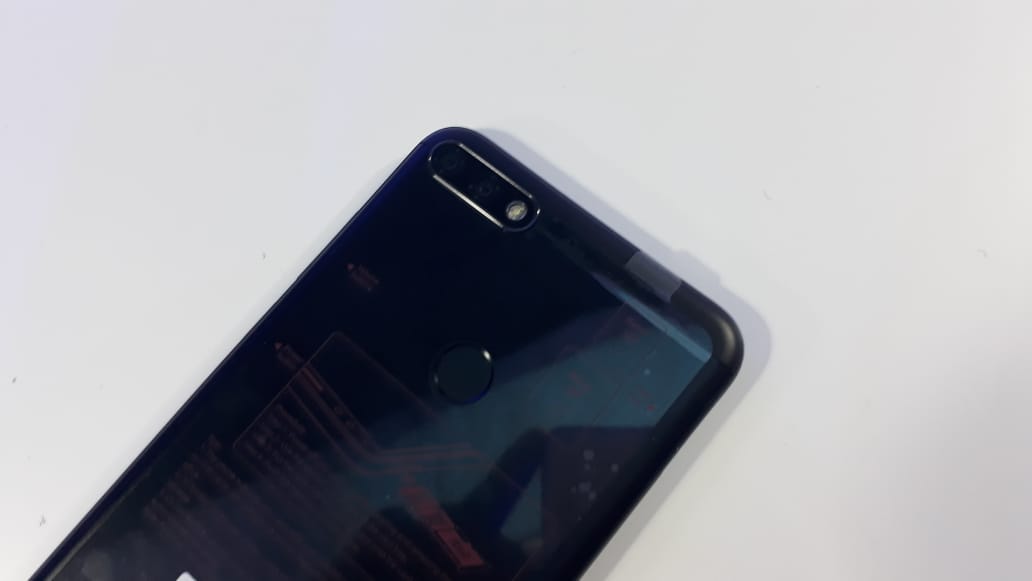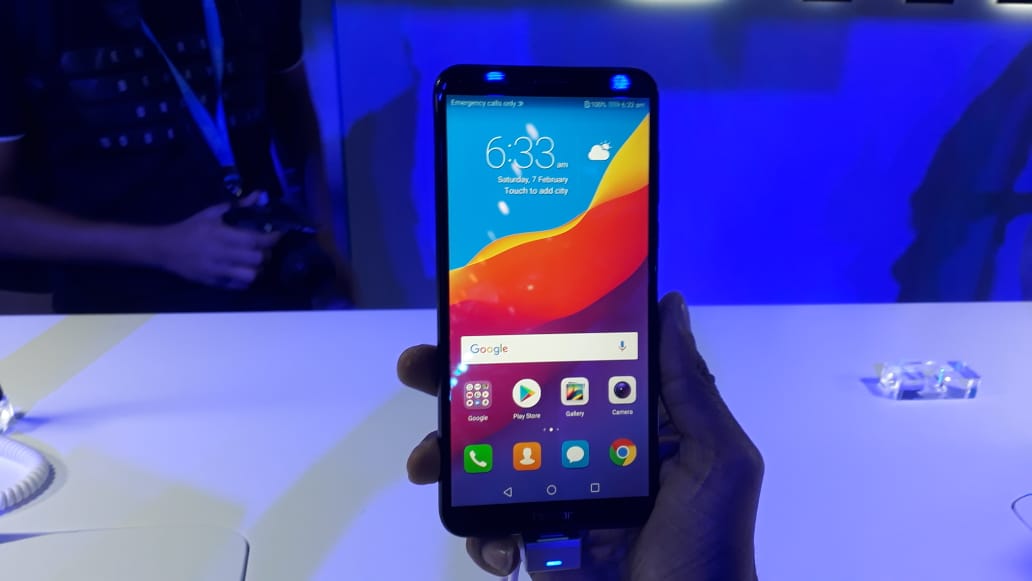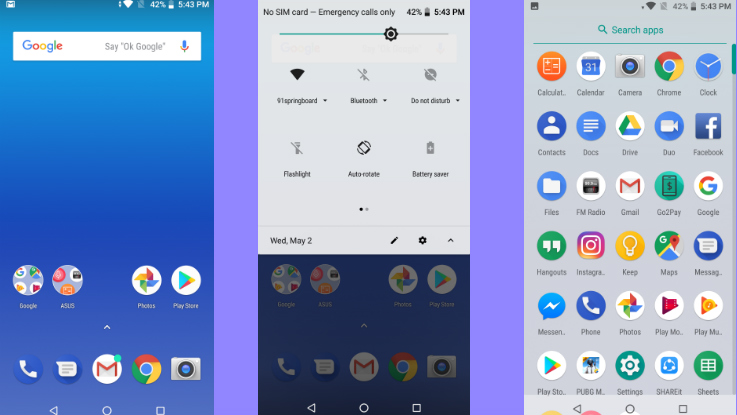Honor yesterday launched two smartphones under its 7-series in India, one of them being the Honor 7C that came with face unlock and an elongated 18:9 5.99-inch FullView display. Running the latest Android Oreo, the entry-level Honor 7C starts at a price of Rs 9,999 on Amazon India, while the one featuring 4GB of RAM and 64GB of storage comes in at an asking price of Rs 11,999.
The closest to match Honor’s pricing is Asus’ Zenfone Max Pro M1 whose 4GB RAM variant sells in India for a retail price of Rs 12,999 on Flipkart. Asus is yet to unveil the high-end 6GB variant of the Zenfone Max Pro M1 and thus we can settle on judging which phone ticks all spaces to become to the best smartphone in the budget range through the 4GB variants of both devices.
Design:
The Honor 7C being a budget device didn’t take inspiration from Xiaomi and is clearly not a Redmi Note 5 clone. Made of a flat metal black panel with a slim and light form factor, the Honor device features horizontally aligned camera module on the back, a fingerprint scanner at the centre and an Honor branding at the bottom leaving most of the spaces at the back empty, like it should be.

The Zenfone Max Pro M1 for all its praises features the same poignant design as some budget phones in the market. However, much of the back can be distinguished due to the vertically placed camera layout which sits in one corner. There’s also a fingerprint scanner located at the centre of the rear panel below which Asus has engraved its branding. On every other aspect, the devices look a lot like each other and made of the same build quality as well.
Winner: Honor 7C.
Display:
Asus surprisingly provides a Full HD+ 6-inch display on the Zenfone Max Pro M1 with a resolution of 2160 x 1080 pixels. The display is vivid and bright enough to offer 450 nits of brightness when used outdoors. Though a bit reflective, 1500:1 contrast ratio more than makes up for stand delivers an immersive experience in all environments. The Pixel density on the device is like any other mid-range smartphone and goes as high as 402 ppi.

Although the Honor 7C offers an elongated display, it cuts short on its resolution as it only provides an HD+ screen with 720 x 1440 pixels and Pixel density of a mere 269 ppi.
Winner: Zenfone Max Pro M1
Hardware:
The Honor 7C is powered by an entry-level Qualcomm Snapdragon 450 SoC with an Adreno 506 GPU, 4GB of RAM and 64GB of onboard storage. Though it doesn’t offer the fluidity of Snapdragon’s 600-series chipset, it handles all daily used apps thrown at it with no noticeable lag.
The Zenfone M1 device features the power efficient Snapdragon 636 Chipset which we’ve also come to see in Xiaomi’s Redmi Note 5 Pro. The SND 636 coupled with an Adreno 509 GPU, 4GB of RAM and 64GB of storage offers sheer performance on papers as well as in real life, leaving its Honor counterpart to bite the dust. In our in-depth review, we managed to run high-end games like PUBG and Asphalt 8 on the Zenfone Max Pro M1 and the device did so with no lag whatsoever.
Winner: Zenfone Max Pro M1
Software:
In addition to its unique design, the Honor 7C also doesn’t disappoint in terms of software which is Android 8.0 Oreo. The in-built software comes with face recognition as well as a Ride mode to make a biker’s life easy but it does so at the cost of a heavily skinned EMUI 8.0. There are finger gestures controls as well as the flip to mute options that make the Honor 7C easier to navigate.

While Asus was always criticized for its terrible customizations inside its ZenUI, the Taiwanese giant has done a great deal of improvement in the software inside the Zenfone Max Pro M1. Not only does the phone run on the latest Android 8.1 Oreo, the user interface offers a near-to-stock experience with minimal bloatware from Asus. All functions are easily accessible and the UI transitions smoothly with no issue or bug at the time of this writing. Asus has also promised timely updates for the M1 and we’d want to believe so since it rolled out a Face Unlock feature to the Zenfone device within a week of its launch.
Winner: Zenfone Max Pro M1
Camera:
Honor 7C is one of the few devices to feature a dual-camera setup in a sub-Rs 10,000 price segment and the camera setup on the 4GB RAM variant is exactly the same. The 7C equips a 13-megapixel primary sensor placed horizontally next to the secondary 2-megapixel lens for clicking wide Aperture and depth of field shots. The device offers various modes like HDR, panorama, watermark with several modes to choose from for easy photographic adjustments. There’s also an 8MP selfie camera on the front which is loaded with flash for lowly lit conditions.
.jpeg)
But none of that comes anywhere close to the combination of 13 MP (f/2.2, 1.12µm) + 5 MP (f/2.4, 1.12µm) lenses on the Zenfone Max Pro M1. While the primary sensor features phase detection autofocus, a 5 element lens, and a Wide-Angle 80-degree lens, the secondary sensor also yields in perfect bokeh shots. The camera on the front which is an 8MP shooter also offers clearer less noisy pictures due to its f/2.0 aperture and 85.5-degree wide angle lens. Except for extreme low light shots, the camera on the Zenfone M1 came out on top as it exposed natural lights and colors with proper blurred effect.
Winner: Zenfone Max Pro M1
Battery:
Honor has never been the ones to offer large batteries on its smartphones and 7C is no different. The device comes with an adequately sized 3,000mAh power unit which might last its users to up to a day on light usage since its chipset is also not a power efficient one.
Asus’ three-year-old Zenfone Max first came with a 5,000mAh battery and was one of the few devices at that time to equip such a large battery. The Taiwanese giant has brought back its same large-sized battery to the Zenfone Max Pro M1 which now charges to full in over 2 hours which is impressive. The Zenfone M1 will last you to up to a whole day on heavy usage and might even give you two days of power on moderate use.
Winner: Asus Zenfone Max Pro M1
Verdict:
The Honor 7C is a well-designed phone with a dual camera setup on its entry variant which retails at Rs 9,999, being the only one to do so. Though it’ll never be able to match up to its Asus counterpart, it lures in its users with a definitive price tag of Rs 11,999, a promising if not top-of-the-line performance and dual cameras that work wonders.
The Asus Zenfone Max Pro M1, on the other hand, is a promising device with an impressive set of specifications with the power efficient SND 636, a near-to-stock Android experience, an enhanced dual-camera setup and a mammoth 5,000mAh battery to go with it. All of this for just a tad higher price of Rs 12,999. If Asus sticks to its promise of providing regular updates, there’s absolutely nothing that’s going to stop it from disrupting the budget market which is currently dominated by Xiaomi.

